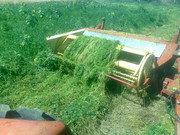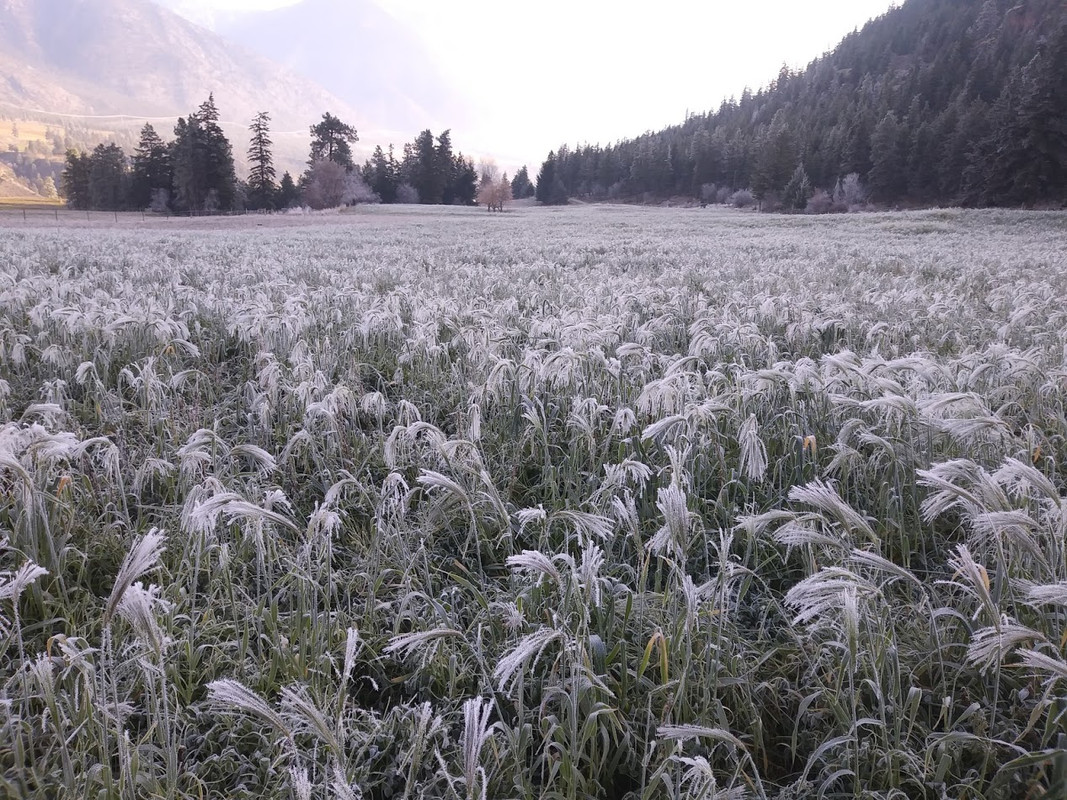I am sure you found this.
Though commonly found in pastures, hairy vetch can cause a systemic granulomatous disease, occasionally in cattle and rarely in horses. The disease prevalence is greatest when the major component of the forage is hairy vetch or when the plant is reaching maturity in mid to late spring. The plant is less likely to cause a problem in hay or when ensiled.
In cattle, the ingestion of Vicia spp. has been associated with three apparently different clinical manifestations. One clinical form is characterized by acute neurological signs compatible with the cyanogenic glycosides contained in the seeds. In another form, the animals may present with subcutaneous swelling, ulcers of the oral mucous membranes, purulent nasal discharge, cough, alopecia, weakness, and loss of appetite. The third form of V. villosa (and, to a lesser extent, other Vicia species) poisoning, which is the best studied and documented of the three forms, consists of pruritic dermatitis with alopecia (not restricted to non-pigmented areas as seen with photo-sensitivity), diarrhea, weight loss, drop in milk yield, and sporadic abortions and red-tinged urine. The body temperature is usually normal. Lymphocytosis and hyperproteinemia are typical clinical pathologic alterations in affected animals. In horses, reported clinical signs include generalized dermatitis, with alopecia, crusting and scaling, blepharitis, conjunctivitis, corneal ulceration, lymphadenomegaly, depen-dent edema, diarrhea, and wasting, accompanied by lymphocytosis and hyperproteinemia.
On postmortem examination of affected animals, there are multifocal to coalescing, gray-yellow, soft to moderately firm nodules disrupting the normal architecture of several organs, including liver, kidneys, spleen, heart, lymph nodes, and adrenal gland. Microscopically, the lesions consist of perivascular granulomatous inflammatory infiltrate composed of epitheloid macrophages, lymphocytes, plasma cells, occasional multinucleated giant cells, and, often, eosinophils.
The pathogenic mechanism associated with hairy vetch toxicosis has not yet been determined. It has been proposed that the vetch lectins induce a type IV, or cell mediated, hypersensitivity reaction that would account for the inflammatory reaction seen in this condition. Another hypothesis is that the vetch lectins might directly activate T lymphocytes, thereby initiating the multisystemic granulomatous disease. The facts that the plant is frequently consumed by cattle without any apparent problem, that several unsuccessful attempts have been made to experimentally induce the disease in younger animals, and that it was reproduced only once in a cow that had recovered from the disease one year earlier are claimed as further evidence to the hypersensitivity theory. A genetic predisposition is also suggested because vetch-associated systemic granulomatous disease occurs mainly in Holstein and Angus cattle.
In cattle, vetch-associated disease is prevalent and more severe in cattle > 3 years old. Affected younger animals usually have mild disease, but can still be fatally affected. Sex predilection is not apparent. Outbreaks are most common during the season of maximal vetch growth, although sporadic cases are observed throughout the year. Cattle that develop the clinical disease usually have been grazing pasture that contained hairy vetch for at least 2 to 6 weeks, and sometimes clinical signs can become apparent only after the cattle have been removed from the hairy vetch pastures. The interval between the appearance of clinical signs and death ranges from 3 days to 5 weeks, but is usually between 10 and 20 days. Morbidity rates vary from 1-68% (but in most outbreaks is approximately 10%); lethality rates are usually high (50-100%; therefore, recovery of animals that develop severe disease is unlikely.
In horses, systemic granulomatous disease is most likely multifactorial. Many cases of this disease occur in this species without known exposure to vetch pasture. Also in cattle, several clinically and pathologically similar (if not identical) diseases have been reported in animals that have not had access to vetch. These have been referred to as "vetch-like diseases", and have been associated with the consumption of rations containing diureido-isobutance (DUIB) in the Netherlands, the ingestion of silage preserved with Sylade (a commercial silage additive consisting of a combination of formalin and sulphuric acid) in Wales, and the consumption of citrus pulp in the United States, England, and Brazil.
-by Bethany Lovaas, Class of 2004
-edited by Dr. Ingeborg Langohr, ADDL Graduate student
https://www.addl.purdue.edu/newsletters/2004/winter/vetch.asp


